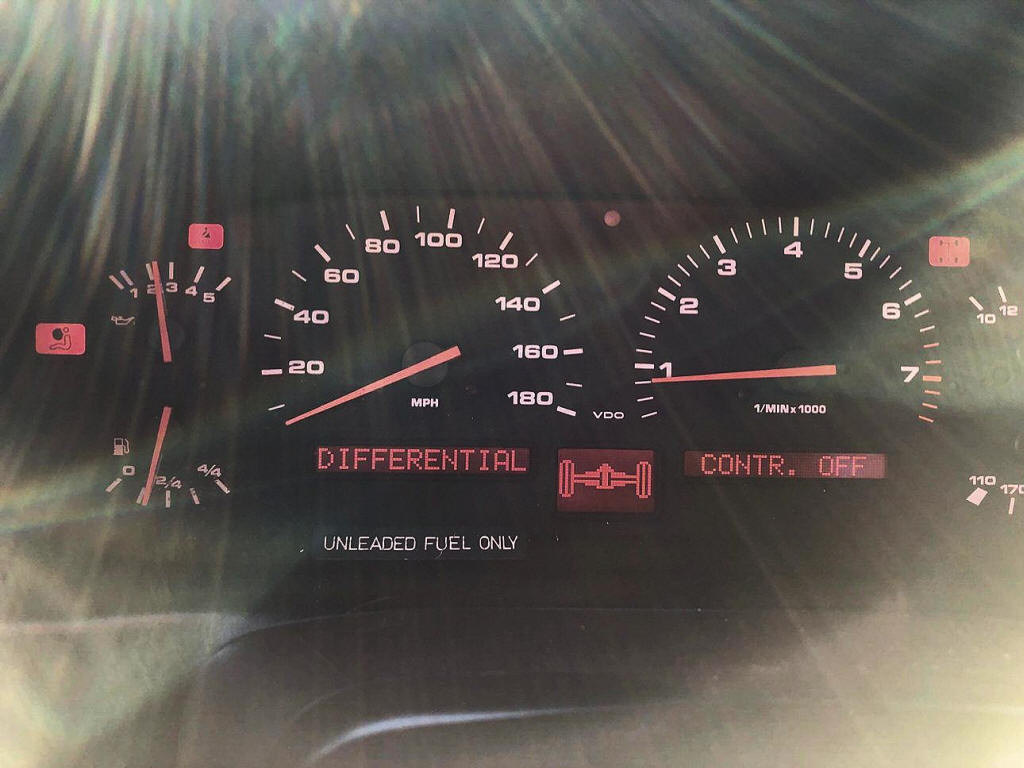
Control unit works
in three different driving ranges .
1 .Traction while moving off
2.Acceleration from driving in curves
3.Ferraria effect (accelerator pedal released in curve)
1 . Traction While Moving Off
Pressure depending on wheel acceleration is built up in the transverse lock when
the control unit recognizes slip of a wheel through comparison of the wheel
speed values . System pressure Is increased in steps, until the slipping wheel
again rotates in the permitted speed range, and then held constant for a
predetermined minimum time . Pressure buildup depends on wheel acceleration, in
other words the pressure will rise faster when wheel acceleration is fast . The
pressure Is dropped in small steps .
2. Traction Regulation for Driving in Curves with High Transverse
Acceleration
The driven wheel on the inside of a curve tends ,to slip and propulsion is
reduced when driving in curves with high transverse acceleration . A locking
torque depending on the vehicle's transverse acceleration, road speed and
recognized curve is introduced to prevent this . Locking torque Is lower with a
high road speed and high transverse acceleration than with a low road speed. If
cornering stability (lateral control) worsens by way of example due to a change
in the road surface condition (change from non-skidding to slippery surface),
this will be recognized from the rear axle wheel speed values and locking torque
will be reduced very quickly in order to prevent load type
over steering due to locking . This function is effective in the entire speed
range above 25 km/h (16 mph) .
3. Ferraria Effect
Rear wheel driven cars tend to oversteer when the accelerator pedal Is released
suddenly while driving in a curve . This over steering tendency can be reduced
considerably through application of correct transverse locking torque . This
function Is activated by transverse acceleration input information with
right left curve identification and a comparison of wheel speed (wheels on
inside and outside of a curve) . The amount of locking torque required Is
determined by the road speed, transverse acceleration
and speed of wheels. Locking torque is reduced in steps as soon as the car is
accelerated again or the brakes are operated, or the activating conditions no
longer exist .
The function of ferraria effect works in the entire speed range from 60 km/h (31
mph) on .
==========
The PSD pump is a high pressure hydraulic pump that is activated when ignition is turned on. The ABS/PSD ecu sends a signal to the relay in the spare wheel compartment which in turn energizes the electro motor that runs the pump. The pump is supposed to run 2-4 seconds until pressure is around 140 bar (it can have up to 180 bar) and at this point the pressure sensor stops the pump from running. When the ABS/PSD ecu sees one of the above conditions it energizes (pulses) the valve which releases pressure from the reservoir into the slave cylinder at the differential. During this process the pressure may drop below the sensor trigger value and the pump will run again.
A (failure) message that the differential controller is switched off may appear in the instrument cluster when one of these conditions is true:
- Wheel rotation speed is not detected
- Wheel rotation speed implausible
- Pressure buildup phase takes longer than expected
- ABS valve issues
- Transversal lock issues
- ECU issues

regards
Theo